Does your Ford with a C-Max engine not start up, giving you an “Engine System Fault” message, and you want to know how you can fix the issue? You’ve come to the right place, for we have researched this question and have the answer for you.
The simplest solution you can try is to check the fuses that work with the circuitry of the ECU (Engine Control Unit). Check the user manual to locate the fuse block and the fuse that you need to check or replace. Other possible causes of this problem include the following:
- Corroded fuse block
- Failing relay
- Failing wiring harness
- Battery issue
- Failing alternator
- Faulty ECU
Let’s talk more about the different reasons why you’re getting this error in the succeeding sections. Learn how to solve the possible causes of the problem in the sections below.
Read on!
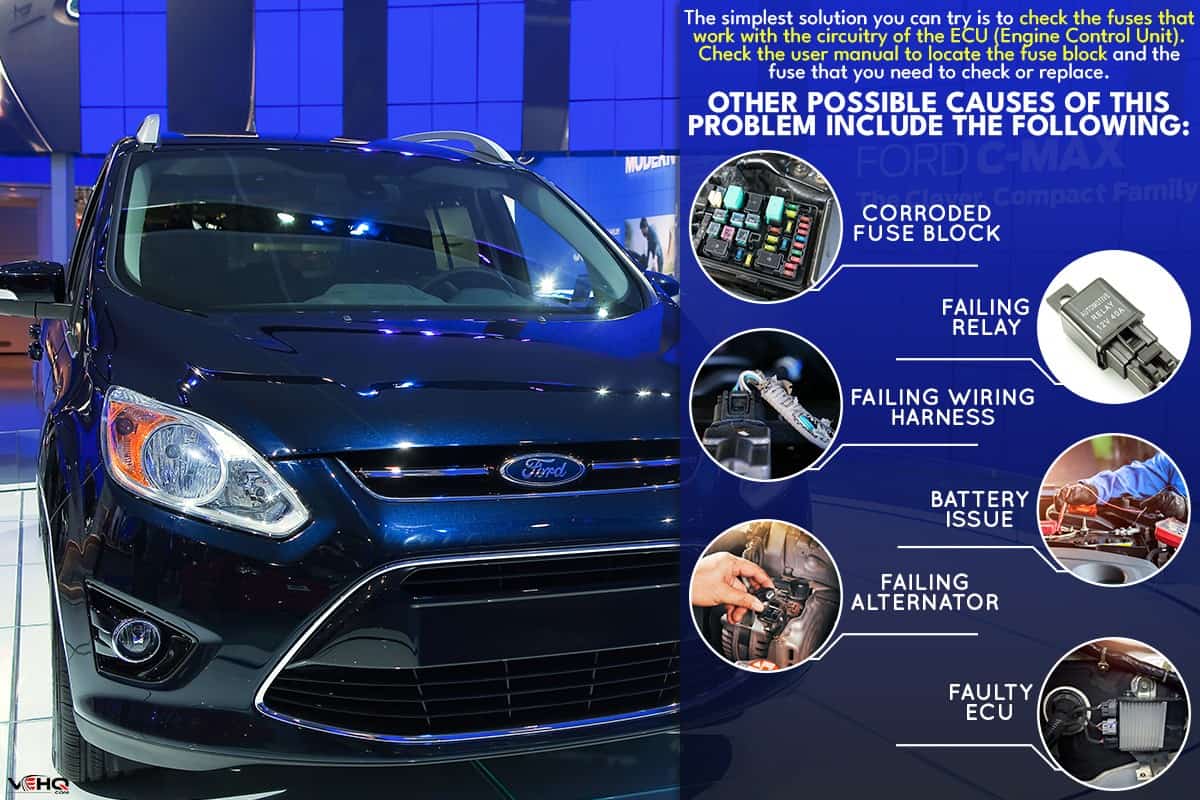
The ECU (Or ECM): Controlling Engine Function
The ECU or ECM (Engine Control Module) is a small computer inside your car. Modern fuel injection cars use an ECU to electronically control the amount of fuel going into the combustion chamber to improve fuel efficiency over old engines without an ECU.
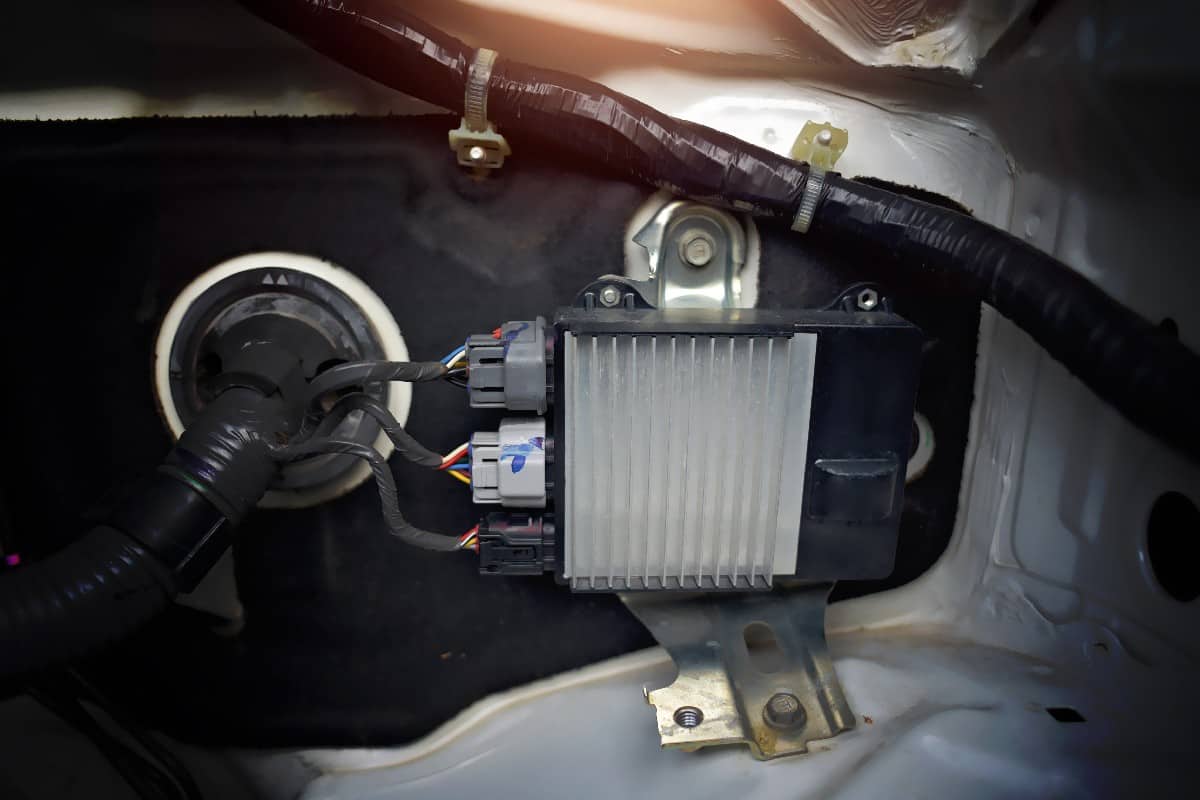
Most ECUs are specialized for controlling the functions of the engine. Mechanics usually call it an ECM if the module also controls the functions of the transmission.
The core component of the ECU is a microcontroller chip that contains software that can communicate with the other modules of your car.
At its most basic, the ECU controls the amount of fuel that is injected into the combustion chamber while determining the ideal amount of air that will mix with the fuel. It is also responsible for timing the ignition once the fuel and air reach the peak compression inside the combustion chamber.
Multiple sensors that monitor the engine’s performance relay their information to the ECU, like the crankshaft and camshaft sensors. There are different modules in a modern car that control specific functions of your car.
An example is the PCM (Powertrain Control Module). It is a type of ECU whose specific function is monitoring the performance of the powertrain of your car.
The interconnectivity of the different modules allows them to use common sensors and share data. However, if one module encounters a problem, it can lead to a catastrophic failure across all the other modules that rely on the information of the problematic module. Interconnectivity also means that it can be a challenge to diagnose wiring issues in your car.
Fuse Problem Causing “Engine System Fault” Issue
Modern cars that use the C-Max engine usually have two fuse blocks—one inside the engine bay and another under the passenger-side dashboard. Check your car's user manual to find out which fuses work with the engine and their location.
Check the fuses for damage and corrosion.
Any sign of damage can prevent the flow of electrical energy through the circuit and limit the electricity that the ECU receives. This can cause the ECU to malfunction and give off various errors.
Similarly, corrosion on the contacts of the fuse reduces fuse conductivity and weakens the flow of electricity to the ECU. This also leads to malfunctions in the ECU.
Checking Problems With The Fuses
Check both fuse blocks for fuses that connect to the engine. Replace corroded and damaged fuses.
In addition to fuses, check the relays and make sure that they are tightly connected to the ports. Loose relays can prevent electrical current from making it to the fuses that go to the engine and the ECU.
Automotive relays make use of a small current to control the flow of electricity on circuits that use large electrical currents. Relays are important components that ensure the flow of electricity goes where it should. Replace any relay with damage, crack, or corrosion.
We have an article here that contains a section on testing relays using a multitester.
CrocSee Blade-Type Car Fuses are available on Amazon through this link.
Checking Fuse Block For Corrosion
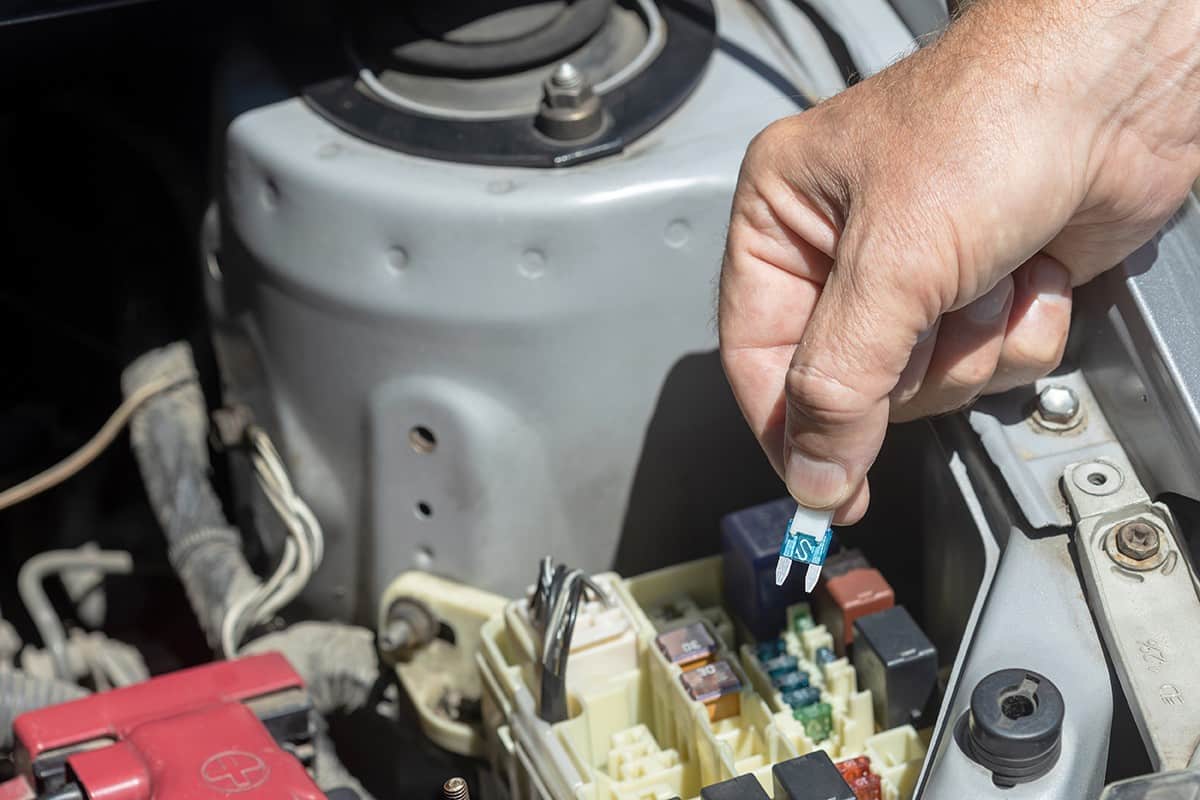
Check both fuse blocks for corrosion. Corrosion on the fuse block’s contacts will create a similar situation as a failing fuse or relay. Even without corrosion, a dirty fuse block can cause connectivity problems.
Tresalto Auto Trim Removal Tool Set is available on Amazon through this link.
Here are simple steps to clean your fuse block.
- Disconnect the negative terminal of the car battery.
- Loosen the bolts that keep the fuse block in place.
- Use a plastic trim removal tool to pry off the fuse block from one side.
- Disconnect the wiring harness from under the fuse block. Take a picture of the wiring harness so that you will have a reference when you put everything back. This is just a precaution since most fuse blocks are color-coded, and the connectors don’t go into the wrong port.
- Take the fuse block somewhere you can take it apart.
- Take a picture of the fuse block, so you’ll know where each fuse and relay go.
- Remove the fuses and relays from the fuse block.
- Remove the screws that connect the top side of the fuse block with the bottom side. This will give you access to the circuitry inside. Some car models have simple circuitry for the fuse block, while other car models can have multi-tier circuitry. Regardless of the type of circuitry that you find, you should handle it with care to avoid loosening or breaking the connections.
- Use an electronic contact cleaner. Spray the contact cleaner into the contacts of the circuit board. Spray sparingly on the contacts with heavy corrosion.
- Leave to dry. This can take two to three hours to complete.
- Reinstall the fuses and relays once the fuse block is dry.
CRC QD Electronic Cleaner is available on Amazon through this link.
Wiring Harness Issue
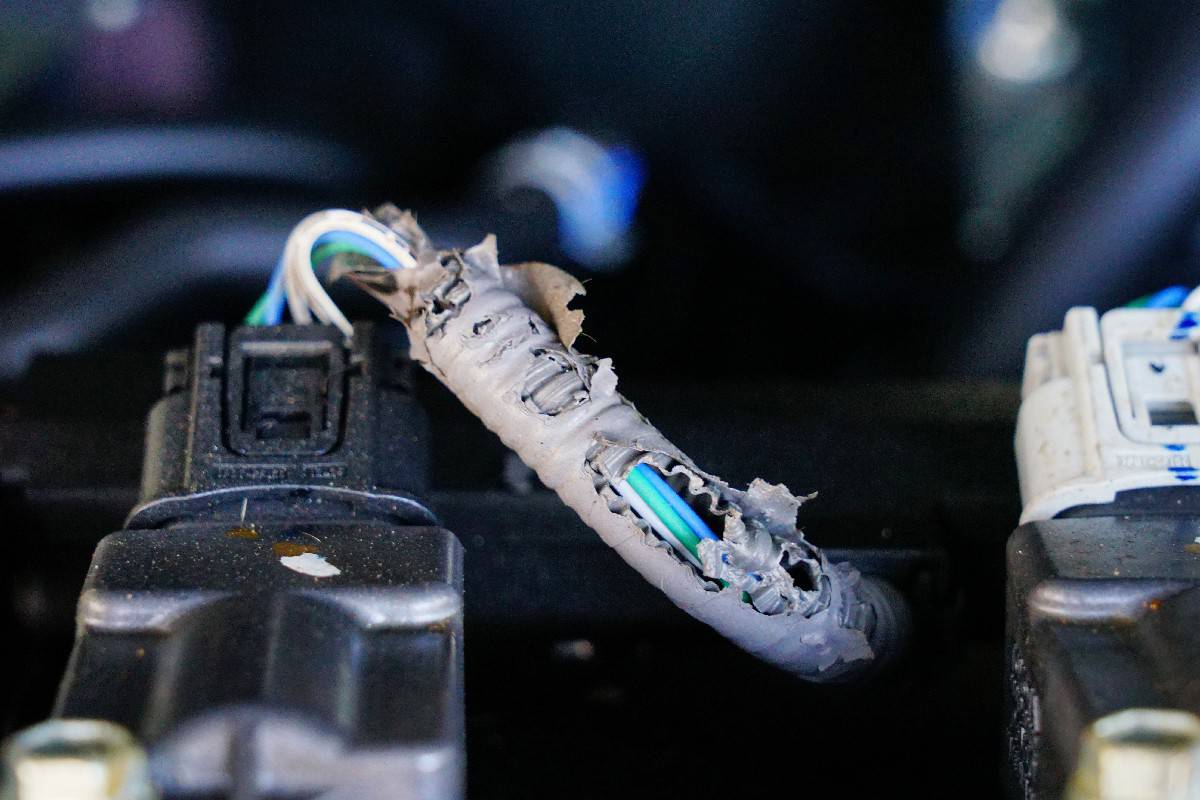
Before reinstalling the fuse block back into your vehicle, inspect the wiring harness for damage. Look for wires that seem to be broken, melted, or chewed on.
Any problem with the wiring harness will become a problem for your car. The wiring harness is a bundle of wires that ends in a plastic connector. Also, check the pins of the wiring harness for damage. A broken pin is a cause to replace the wiring harness.
Moreover, check the wires if there are any that seem like it is too tight. The wires should be loose and never tight.
If you see any problems with the wiring harness, bring your car to a mechanic to check the wiring harness and replace it if necessary.
How a weak battery can cause a no-start issue?
The car battery is responsible for supplying your car with the electricity that it needs to start. Once you start your engine, the alternator takes over the task of supplying electrical energy.
If your car battery has a weak charge, it will not be able to provide the necessary electrical energy to start the engine. It will also fail to supply the ECU with the electrical energy it needs to work properly.
Remove the faulty battery and replace it with a working battery. It doesn’t have to be a new car battery as long as you know it works in another car. If you don’t receive the “Engine System Fault” message after replacing the battery, then the problem is the battery.
If your battery is new, troubleshoot the alternator. Bring your car battery to a battery center. Have them check the health of the car battery.
How does a failing alternator affect your car?
The alternator is a type of generator that converts mechanical energy from the engine into electrical energy. An alternator supplies your car with electrical energy once the engine starts running. This includes charging the car battery.
However, once the alternator starts to fail, the electrical energy that it generates will start to drop. It will soon get to a point where the alternator no longer produces enough electricity to charge the battery.
Have a mechanic replace the alternator. If you’re handy with making DIY fixes on your car, you can even replace the alternator yourself.
What are the signs of a faulty ECU?
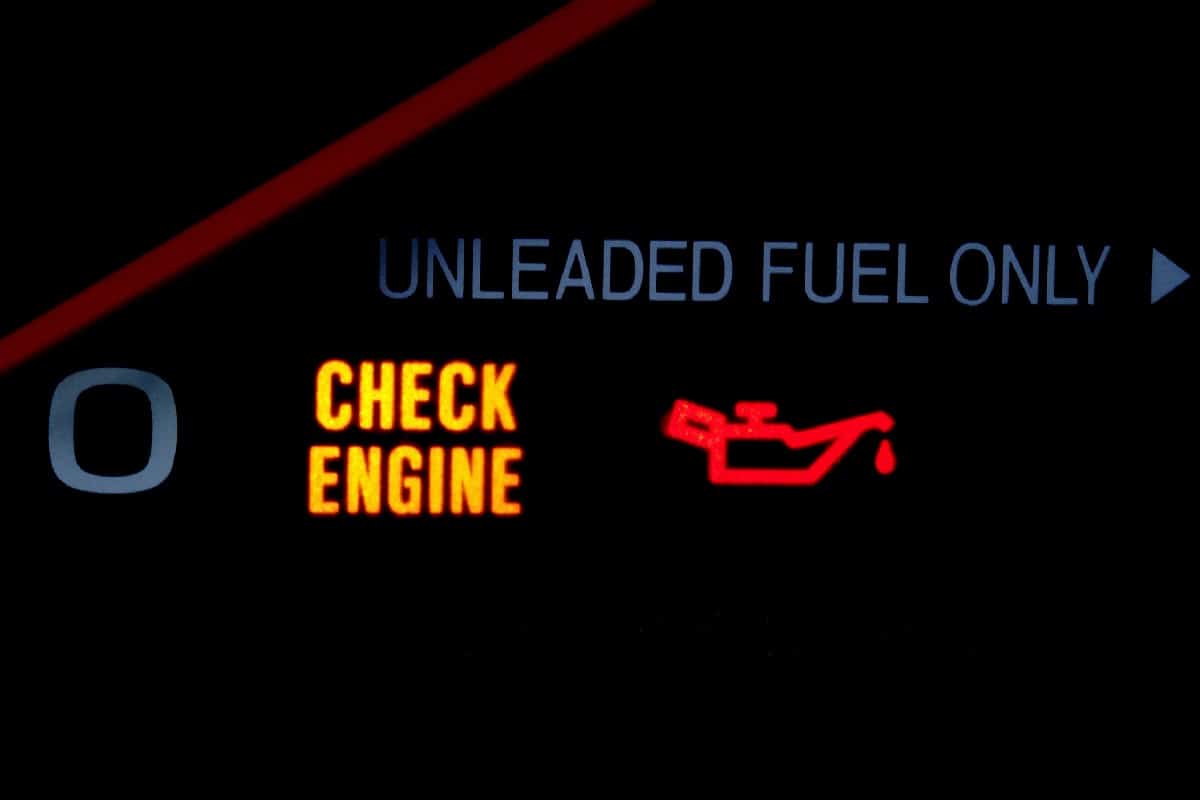
We talked about how the ECU controls the different functions of the engine. If the ECU starts to fail and is unable to control the C-Max engine, it will give you several signs, like the “Engine System Fault” message.
Another symptom is the “Check Engine” light that you will see lit up on your dashboard. You might experience your C-Max misfiring or stalling before the “Engine System Fault” message.
Replacing the ECU is definitely not a DIY task. The replacement will need to match your car and engine.
The replacement ECU also needs reprogramming after installation. Reprogramming an ECU to fit the specifications of your car requires special equipment and knowledge.
The good news is that not all faulty ECUs are up for replacement. Have a mechanic check your ECU. He will be able to tell if he can still repair the ECU.
Conclusion
The “Engine System Fault” error message in cars with a C-Max engine is a problem that is specific to the ECU of that engine. Check the different possible causes until you get to the root cause.
If you enjoyed reading this article, you might find the articles below equally enjoyable to read:
Simple Green Vs. Engine Degreaser [Which To Choose To Clean Your Engine?]



